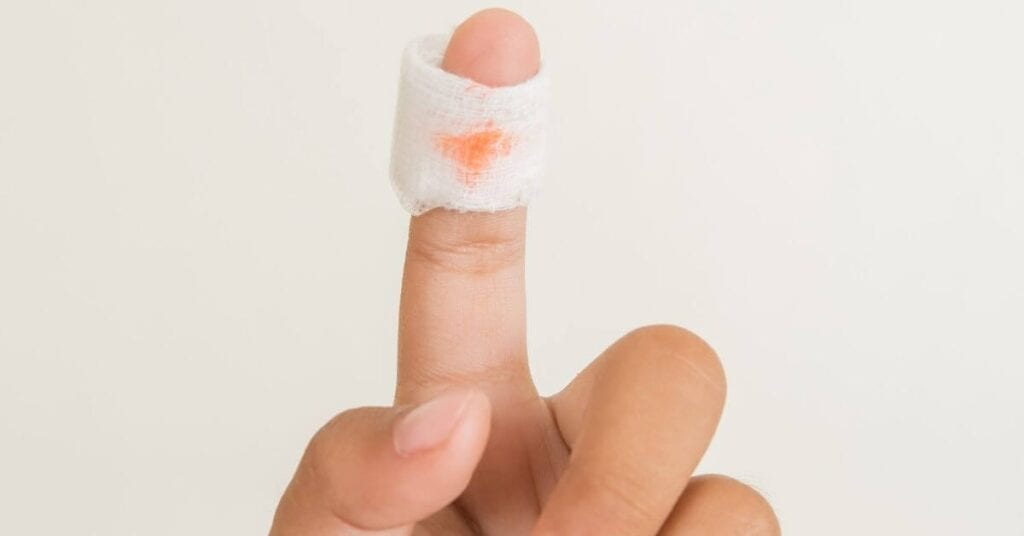Fingertip injuries are the most common way in which people injure their hands. These injuries account for up to 50% of emergency room visits for hand care. Most injuries occur as low-energy crush injuries. A typical scenario is closing a door or window on a digit. The finger is injured, but tissue is not usually missing. Powerful crushing injuries occur when mechanical presses injure fingers. This can result in extensive damage to the soft tissues and bones. Injuries from knives or other slicing tools often result in clean lacerations that are suitable for primary suture repair. Injuries from power saws combine crushing and slicing injuries and often result in a large wound requiring flaps or grafts for repair.
At the initial evaluation, important information from the patient’s medical history is obtained. This includes the patient’s occupation and their avocations or hobbies. It is important to note if the injury is to the dominant hand. A history of nicotine use is important as the use of nicotine has a negative impact on soft tissue healing.
The injured finger is examined first for sensation, prior to the injection of the local anesthetic in the form of a digital block. This allows the physician to perform a complete examination of the finger without causing pain to the patient. The physician assesses the quality of the blood supply to the finger. The extent of the injury to the skin, nail bed, tendons, and bone is determined. An X-ray of the injured finger is obtained to determine the presence and extent of the bony injury, as well as to look for foreign bodies within the wound.
The severity of the injury can range from a small swelling of clotted blood or hematoma under the nail, to complete the amputation of the fingertip. Most injuries can be managed in the emergency department or in the office of a hand surgeon, who is uniquely equipped to deal with these injuries. Treatment depends on the extent of the injury and can include simple suture repair, removal of the nail plate and stenting of the nail fold, flap or graft closure of large (greater than 1 cm) defects, or completion amputation. It is generally not possible to re-attach an amputated fingertip if the level of the amputation is beyond the farthest joint in the finger.
Antibiotics are recommended after repair of the injured fingertip. The finger is dressed with sterile dressings for the first week. If possible, the patient is encouraged to move the joints closest to the injury in order to avoid finger stiffness. Sutures generally remain in place for two weeks, and it may take up to four weeks for the injured fingertip to heal. Nail re-growth after removal can take up to six months. Some patients may require a course of hand therapy, supervised by a certified Hand Therapist, to regain motion and to decrease the sensitivity of the injured area. Revision surgery is often needed in the case of fingertip amputations as retained portions of the nail may become ingrown or prominent.
At Advanced Specialty Care, our skilled team including surgeons Dr. Sohel Islam and Julia Toto, registered nurses and medical office staff care treat a full range of hand maladies including carpal tunnel syndrome, Dupuytren’s contractures, finger and nerve injuries, osteoarthritis, as well as many unsightly conditions such as ganglions, arthritic spurs, protruding veins, and skin blemishes. We are located in Danbury, in Fairfield County, Connecticut.

